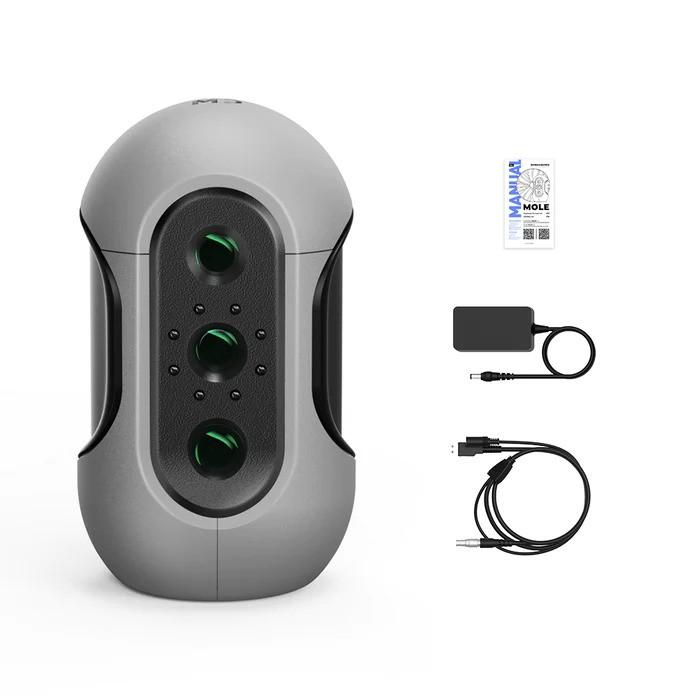In the quest to preserve our planet's natural and historical legacy, technology plays a pivotal role. Among these technological advancements, the 3d scanning emerges as a powerful tool for environmental conservationists and archaeologists. Its high-precision capabilities, combined with multispectral technology and an accessible price point, make it an invaluable asset in documenting and analyzing both natural environments and archaeological sites with unprecedented detail and accuracy. This article explores the transformative impact of the Mole 3D Scanner in these critical fields.
Preserving Natural Habitats
Environmental conservation efforts are greatly enhanced by the detailed data the Mole 3D Scanner provides. For instance, conservationists can use the scanner to create detailed 3D models of intricate ecosystems, such as coral reefs or ancient forests, capturing their current state with high precision. This data is crucial for monitoring changes over time, assessing the impact of climate change, and implementing conservation strategies. By comparing 3D models captured at different times, researchers can identify subtle changes in the environment, enabling them to take proactive measures to protect these vital ecosystems.
Documenting Biodiversity
Biodiversity documentation is another area where the Mole 3D Scanner proves invaluable. Scientists can create detailed models of various species, particularly those that are endangered or hard to study due to their habitats. This creates a digital repository of biodiversity, which can be used for education, research, and conservation planning. Moreover, the scanner's multispectral capabilities allow for the capture of details that go beyond shape and size, including the texture and color of species, providing a comprehensive understanding of biological diversity.
Revolutionizing Archaeology
Archaeology has been particularly revolutionized by the introduction of the Mole 3D Scanner. Archaeologists can now digitize artifacts, ruins, and entire excavation sites with an accuracy that was previously unattainable. This not only aids in the preservation of these sites but also in the analysis and reconstruction of historical artifacts and structures. The detailed models created with the Mole 3D Scanner allow for virtual restorations, offering insights into ancient civilizations without the risk of damaging the original objects.
Enhancing Cultural Heritage Preservation
Beyond the excavation site, the Mole 3D Scanner plays a crucial role in the preservation of cultural heritage. Historical monuments and artworks can be scanned and archived in 3D, safeguarding the knowledge of their existence against threats such as natural disasters, vandalism, and the ravages of time. These digital archives are not only invaluable for research and restoration efforts but also make cultural heritage more accessible to the public, educators, and researchers worldwide.
Conclusion
The Mole 3D Scanner represents a bridge between advanced technology and the preservation of our natural and historical legacy. Its application in environmental conservation and archaeology underscores the importance of such technologies in understanding and safeguarding our planet's biodiversity and cultural heritage. By providing a means to accurately document and analyze the world around us, the Mole 3D Scanner empowers professionals and researchers to make informed decisions that contribute to the preservation and appreciation of our global heritage for future generations.
